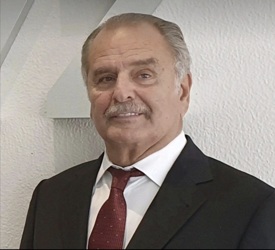


Anthony Tropeano, President of TT Consulting Inc. and a veteran of 45 years in the ferrous and non-ferrous metals industry, shares his insights on the evolving US aluminium market. Drawing on his extensive global experience and network, he highlights a shift among buyers from focusing solely on price to considering total cost of ownership, reliability and value-added services. Tropeano also reflects on the effects of tariffs, the gradual emergence of green premiums and the importance of stronger industry messaging.
In an interview for “American Aluminium Industry: The Path Forward”, Tropeano highlights the evolving US aluminium market, where buyers increasingly prioritise total cost of ownership, reliability and value-added services over just price. He discusses the impact of tariffs, the gradual adoption of green aluminium and the need for stronger industry messaging, commercial alignment and customer education. Looking ahead, sustainability, recycling, technological innovation and geopolitical factors will reshape marketing, pricing and sales strategies in the US aluminium sector.
AL Circle: With high interest rates, fluctuating demand from sectors like construction and transport, and ongoing geopolitical uncertainty, how do you assess customer sentiment across the aluminium value chain in mid-2025?
Anthony Tropeano: Mid-2025 finds customer sentiment across the aluminium value chain in a complex and somewhat uncertain state, shaped by a confluence of macroeconomic, geopolitical, and industry-specific factors.
The US market shows resilience, supported by steady industrial activity, keeping premiums high. However, concerns exist regarding the potential for tariff-induced demand destruction.
Factors to consider are:
In conclusion, customer sentiments across the aluminium value chain is a complex mix of challenges and opportunities.
AL Circle: Having seen the impacts of Section 232 tariffs up close, do you believe they’ve fundamentally reshaped how customers perceive the value of domestic aluminium versus imports, or are commercial decisions still primarily price driven?
Anthony Tropeano: Based on recent analyses and developments, here’s a perspective on how customers perceive the value of domestic vs. imported aluminium following the Section 232 tariffs: Price continues to be a major factor.
AL Circle: You’ve operated in both upstream billet and downstream extrusion environments. How important is commercial alignment across these segments when responding to market swings or allocating capacity effectively?
Anthony Tropeano: Commercial alignment across upstream billet production and downstream extrusion is incredibly important for several reasons, especially when facing market volatility and allocating capacity effectively. Commercial alignment is crucial:
In essence, commercial alignment ensures that both upstream billet and downstream extrusion operate as a cohesive unit, maximising efficiency, minimising risks, and ultimately strengthening the organisation’s ability to navigate volatile market conditions and allocate resources effectively for sustained success.
To know more about the US Tariffs impact the global aluminium industry, click here.